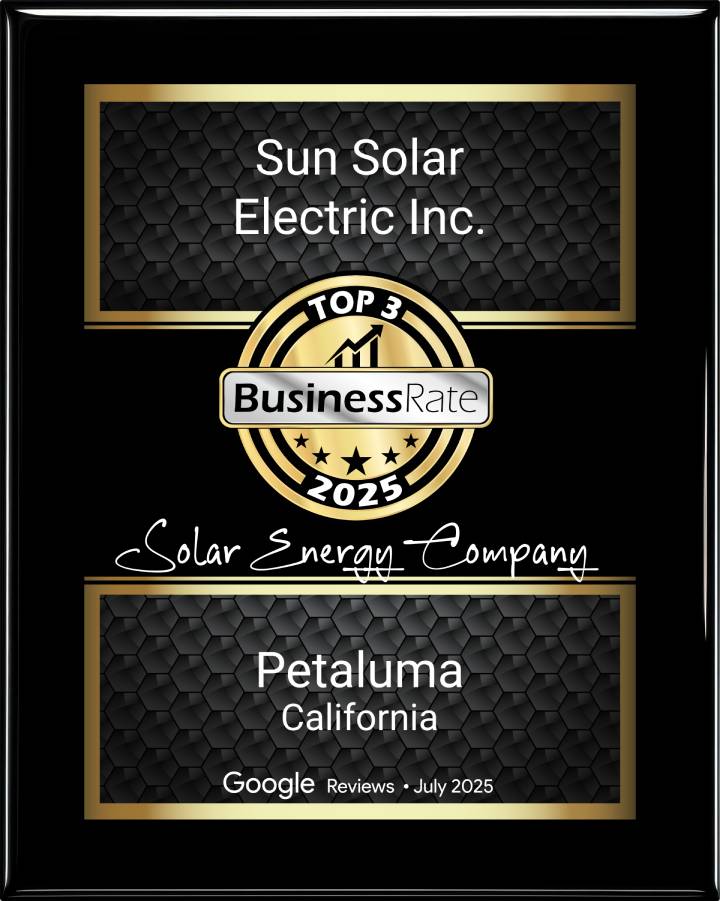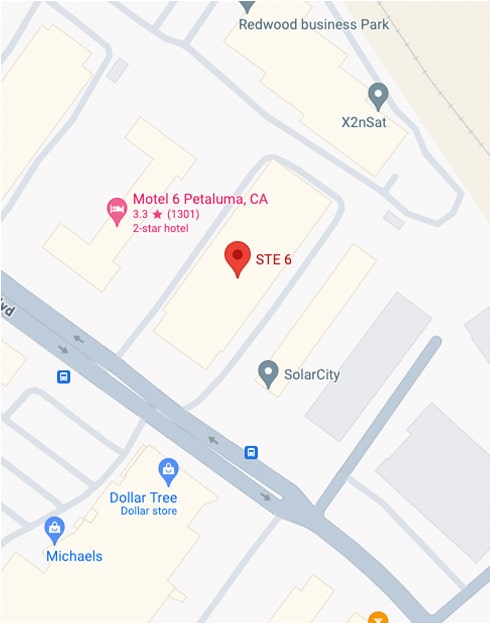If you are considering solar panel system installation, perhaps you know how solar can help you reduce or eliminate power electricity bills. As if this is not enough, there are few other ways solar panels can help you save money. One of these ways is by claiming the federal solar credit. As a home or commercial property owner, the tax credit allows you to subtract or deduct 26% of the gross cost of connecting the system from your income taxes.
General View of Federal Solar Panel Tax Credit or ITC
A tax credit is defined as the money taxpayers deduct from the total income taxes owed to the federal government. Tax credits are preferred over exemptions or reductions by taxpayers because they reduce the amount of taxes due rather than the federal taxable income. For instance, suppose you are claiming a tax credit of $500. Your income taxes owed to the federal government will be reduced by the amount of tax credit due.
Therefore, the federal solar panel tax credit is a tax credit or incentive designed to lower the solar panel installation cost by allowing American residential and commercial property owners to subtract from federal income taxes a percentage of the solar panel system installation cost. The ITC allows a deduction of 26 percent of the total cost of installation. It’s worth noting that ITC applies to home and business owners and has no value cap on it.
Thanks to the solar tax credit, the solar energy system installation cost has dropped significantly nationwide, enabling American taxpayers to save thousands of dollars.
To claim the federal credit, you must complete the solar PV system installation and generate electricity for a home or business located in the U.S. as of 31st December 2020.
The History of ITC
The solar energy tax credit was implemented in 20015 by the Energy Policy Act and expired in 2007. Congress extended ITC to 2016 due to its popularity and success in transforming the country into a renewable energy economy. Later, experts felt the need to open the federal credit further to mature a renewable energy economy fully. As a result, Congress renewed the bill for another five years. The federal credit is available for homeowners up to 31st December 2021, unless Congress renews or extends the policy.
From 2016 to 2019, the federal credit was 30% of the cost of solar energy fitting. Suppose you installed the system after 31st 2019 or planning to install before 31st December 2020; the percent of the federal credit to deduct from the income taxes owed to the government is 26 percent. Today, this 26% tax credit will reduce to 22 percent for energy systems installed in 2021 and 10 percent for business owners in 2022.
Can you Gain Incentives from the Solar Energy Credit?
Anybody who installed solar panels after 31st December 2005 or will install one before the 31st December 2021 is eligible for a solar tax credit.
Also, if you own a system through purchasing or financing, you qualify for the tax incentive. However, if you sign a lease or PPI with the solar panel installation company, you aren’t eligible for this federal credit because you aren’t the system owner. The ICT will belong to the third party owner of the property, who, in turn, uses it to lower your monthly payments.
Similarly, you qualify for this tax credit if the solar energy system is situated in your primary or secondary residence within the country. The essential thing is that you own the second property and reside in it part of the year. For commercial solar PV systems, you will be eligible for ITC if it is credited against and doesn’t surpass your residence’s power consumption.
Further, you can claim a tax credit on the initial cost of installation if this renewable energy system is in use for the first time or has just been installed.
If you want to qualify for the 2020 tax credit, you must begin the project before 31st December. Beginning the solar tax credit, in this case, has two meanings. As per the first meaning, you are eligible for ITC if you are starting the process of solar installation or prepping the roof for solar panel installation.
You can also prove the project has commenced if you have put 5% of the system’s total cost towards the project. Even after completing the 5% Safe Harbor, there must be progress in the project’s construction. These two ways make it easy to enjoy the 26 percent deduction before the year ends.
If the income taxes you owe the federal government is lower than the tax credit, you can still take advantage of the incentives by carrying them forward to the following year. You should, however, not expect a refund because this tax credit is nonrefundable.
An excellent example of this case is where you pay $10,000 to install a solar PV system on your home in 2020. It means you will qualify for $2,600 federal credit. Suppose your federal income tax for the year 2020 is $2,000; you will not owe the federal government any taxes. Your income tax dues for 2021 will be reduced by $600.
What to Expect if Solar Panel Tax Credit Drops?
With ITC, you are encouraged to act as soon as possible before the tax credit steps down. By installing the system now, you get to save a high cost of the solar energy project, compared to waiting a year from now or completely losing out of the tax credit.
Switching to solar energy has multiple benefits, like reducing energy bills and reduced reliance on the electric power grid.
Your system must be in place by 31st December 2021 to enjoy the incentives. If you install past this date, you will not take advantage of the tax credit unless the solar energy system fits into a commercial property. Even if you enjoy the tax incentives, they will be smaller than those who commenced the project early.
The process of installing solar PV systems is a long one. So, if you start late, you might not have reached the stage where you are considered eligible for ITC. Again, you might have the capital to start the project but fail to find anyone to work on it within the little time remaining.
If you are willing to install a solar energy system in your home or commercial property, reach out to an installation company on time so that they can evaluate your property and decide on the best system to install while time is on your side. Looking at the trend of federal ITC, it has been losing value over the years, and it has deadlines, although Congress keeps extending them. So, it’s imperious to commence the process of installing solar energy now.
Expenses You are Allowed to Claim
The expenses you can claim include:
- Contractor labor expenses for onsite preparations, assembly, and initial installation, including developer, permitting, and inspection charges.
- Solar panels
- Balance-of-system equipment like wiring and inverters
- Energy storage equipment
- Sales tax on appropriate expenses
Keep in mind that the contractor fee for solar installation shouldn’t worry you. This is because the expense is something you can claim in the solar panel tax credit.
Sometimes you can even decide to do the installation by yourself. Although you are not allowed to claim labor expenses in such incidences, the total costs will still be high enough to ensure maximum tax credit.
What is the Difference Between a Tax Credit and a Tax Rebate?
Many people confuse tax credits and tax rebates. The utility you get for installing a solar energy system provides subsidies exempted from your gross income taxes. In these cases, the utility rebate is deducted from the cost of installing the system before calculating the federal credit. It means that tax rebates are refundable, and you will be paid even if you don’t owe the federal government any income tax.
While many American taxpayers are eligible for ITC, some are not. If you don’t owe the government any taxes, you won’t enjoy the energy credit benefits. In case you lack a steady income, retired, or just got employed, you might not owe enough income taxes to maximize solar tax credit.
If the gross income tax owed to the government in the year you finance or install the solar energy system is sufficient, the federal credit will pay for it. However, if you already paid the taxes by withholding it from your paycheck, the federal tax credit will be applied as a tax refund. The refund mostly goes to clearing pending loans. Besides, the unused amount of your tax credit can be carried to the following year and deducted from the year’s income tax owed.
How Do You Claim ITC?
The first step towards claiming your solar panel tax credit is having solar energy system installation receipts, as well as the IRS 1040 and 5695 Forms. The IRS 5695 calculates tax credit for residential energy, while IRS 1040 calculates individual tax returns. If it’s your accountant that will be filing the returns, notify them that you have gone solar so that they can claim your federal solar energy credit. However, if you decide to file your taxes, you will follow the following steps:
- Gather all solar installation receipts and store them safely
- Confirm if you qualify for this energy credit. A home or business owner who owns a solar energy system and owes taxes to the federal government is eligible for the energy credit.
- Fill out the IRS 1040 Forms as usual. However, you should stop filling out the form when you get to line 53 and begin filling Form
- Validate your eligibility for ITC by completing. On line one of the form, you will enter the total gross cost of installing the system minus cash rebates. In lines 2 to 4, enter all the additional energy improvement costs and sum them up in line five to get the solar panel system’s total price. In line six, you are required to multiply the figure you get on line five with 26 percent to get the investment tax credit. Fill out the amount you get on line six on line 13. The other thing is to estimate if you have enough due taxes to claim the full 26 percent tax credit in one year.
- Add the federal credit to schedule 3 or IRS Form 1040
Note that the steps above outline what you need to do to have the 26 percent solar panel tax credit credited to you. If you want to enhance the efficiency of existing panels, you can still claim federal credit. The federal tax credit allows you to claim the cost of solar energy system updates and won’t have to refund the government if you sell the house or property. The law lets you install the solar panels and put the house on sale at any time without restrictions. However, this is the case for residential properties alone because the process in business solar energy installations is more complicated.
If you have any questions regarding solar tax credit, reach out to your accountant or tax expert. Besides, if you aren’t aware of the various installation costs after rebates deduction, you can get this information from the solar installer or service.
Apart from ITC, you can save money when installing a solar panel system by getting multiple contractors’ quotes. You should also avoid big installation companies because they charge higher rates.
Contact a Solar Power and Installation Company Near Me
Since its implementation as a tax policy in 2005, the investment tax credit has helped the country make giant steps towards realizing a renewable energy economy. If you are in Northern California and the Bay Area and want to enjoy the solar panel tax credit benefits, reach out to Sun Solar Electric at 707-658-2157 today and start saving money.
#SolarPanels #ElectricityBill #SolarTaxCredit #BayArea #NorCal











